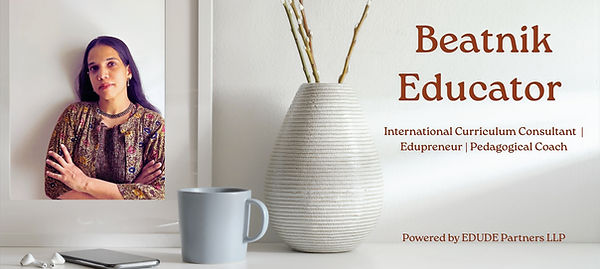Democratic classrooms for a democratic society
- Pallavi Sharma
- Nov 3, 2020
- 3 min read

An ideal classroom would be a democratic one, where decisions are taken democratically rather than being imposed. International baccalaureate (IB) emphasizes ‘ student agency’ as an essential component of implementing inquiry into learning. Student agency gives students the voice and choice of how they learn (EdWords).When students help create classroom rules, it is one way in which students exercise their agency. It fosters democracy but like any other democracy, it has its pros and cons.
Pros
Research indicates that democractic approach is more effective, bth for classroom management and student learning (Teaching Tolerance). Barbara McEwans (1997) points out that if the precepts of a democratic classroom is based on that of a democratic society then the individual rights of a student would be balanced with that of the classroom as a whole. It is likely that when students create rules, they are bound to follow it as well. In my milieu, for instance, we spend our first day of school with our new grades, in making essential agreements that the students commit to follow throughout the year. It so happens that, usually, students are also quick to point out when someone falls out of line. This process gives students confidence in their being and helps them create authentic relationships.
Cons To use McEwans’ (1997) words “ Time can be viewed as a tyrant that leaves no opportunity to engage in humane interactions” (p.152). The reality is that lack of time makes it difficult to follow through the good work of creating a democratic classroom. In my milieu for instance, we are usually burdened by unexpected school events, parent meets and administrative obligations that we are left with no time to foster student voice and choice. Inconsistency in the involvement of students is another limiting factor that may reverse the positive effects of students’ involvement in the creation of classroom rules. Moreover, teachers and students come from various backgrounds and varied temperaments, and it requires a lot of patience and calm to be able to honour individual rights. In a democracy, it is always a challenge to listen to everybody, somebody gains more than the others and resistance is bound to take place.
Ideally teachers should involve students in the process of the creating classroom rules and this would require teachers to "invest time to discuss expectations, set up rights and responsibilities, and follow up on disruptions in ways that will help and not harm students" (McEwans, 1997 p.147). McEwans (1997 goes on to say that an effective integration of pedagogical knowledge , educational psychology, patience, hard work, an unwavering dedication to equal educational opportunity for all students, and a passionate belief that everyone, including teacher, can learn from mistakes builds a democratic environment. Although students should and can be involved in defining some of the classroom rules and in making decision about the consequences but the teacher should lay down some of the fundamentals in the beginning that need to be followed by everyone, including the teacher, at all costs. References
Democratic Classrooms. (n.d.). Retrieved September 22, 2020, from https://www.tolerance.org/professional-development/democratic-classrooms
McEwan, B. (1997). Contradiction, Paradox, and Irony: The World of Classroom Management. In R.E. Butchart & B. McEwan (eds) Classroom Discipline in American Schools. Retrieved September 22, 2020, from http://ebookcentral.proquest.com/lib/univ-people-ebooks/detail.action?docID=3406928.
Student Agency - What is Student Agency? - EdWords. (n.d.). Retrieved September 22, 2020, from https://www.renaissance.com/edwords/student-agency/
_edited.jpg)




Comments